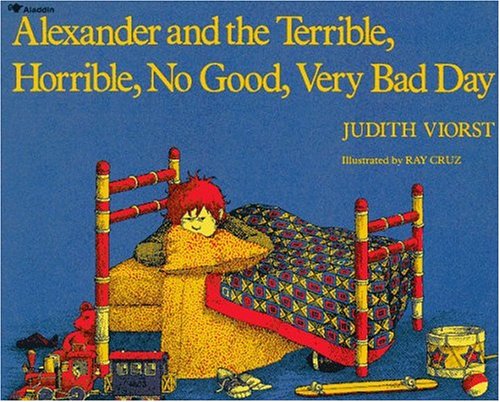Just as the Bear Stearns implosion presaged the 2008 financial crisis, the events of the last few days, building on earlier events, are presaging the collapse of the “pry, poke, prod and punish” wellness industry.
For those readers still living in Biosphere 2, here is a brief review of how we got here:
First was Honeywell’s self-immolation with the Equal Employment Opportunity Commission (EEOC). We’re not sure how Honeywell's benefits consultants failed to advise that all the company needed to do was offer a simple wellness program
alternative that didn’t require medical exams, and there would be no way Honeywell would get hit with an EEOC lawsuit. But they didn't.
Second, the Business Roundtable (BRT) decided to
go to the mat with the president over this EEOC-wellness issue. It is possible that there is some conspiracy at work here, where large companies really want to retain the ability to shame and fine overweight employees into quitting (because you can’t fire people for being overweight). But we lean toward a less sensationalistic interpretation: that the BRT is simply getting lousy advice, likely from consultants whose business model depends on more companies doing wellness. Because the BRT’s member CEOs have actual day jobs, they can be excused for taking the BRT’s word for the benefits of wellness and not investigating this industry on their own; if they did, they would find that the wellness industry attracts more than its share of
well-intentioned innumerates and outright scoundrels, perhaps because the industry lacks adult supervision.
Third was our popular
Health Affairs posting, which spurred see-we-told-you-so pickups by the
Incidental Economist and
Los Angeles Times, the latter of which helpfully added the word “scam” to the discussion.
Thus, we bore witness to a perfect storm, the first-ever lay media feeding frenzy on wellness, from both the right-leaning
Federalist and the, uh, non-right-leaning
All Things Considered. Those would be the first times wellness in general (as opposed to specific programs like, for
instance, the Truven/Highmark Penn State
debacle or
Nebraska’s falsified outcomes) has attracted the lay media. Additionally, the comments, even on the typically erudite All Things Considered, were merciless. Skeptics that we are, we still underestimated employee resentment of forced screenings and risk assessments.
The wellness true believers’ rebuttals were quite in character. As we say in
Surviving Workplace Wellness, in this field you don’t have to challenge the data to invalidate it. You merely have to read the data. It will invalidate itself. Because most of the true believers’ “A Team” are
ethically compromised, they had to go to their bench to find a rebutter. Against all those eviscerations in the major national media, they countered with:
Siyan Baxter, a graduate student at the University of Tasmania, who claimed a positive return on investment (ROI) for wellness. She wrote in a journal that contains the words “health promotion” in its very title and has never once published a negative article about wellness savings. Publication bias, anyone? That isn’t even the punchline. The punchline is that, as our book predicted, Ms. Baxter self-invalidated. She
says, right in the article: “Randomized controlled trials show negative ROIs.”
How did she still come up with a positive assessment of wellness? Because she “averaged” those ROIs with studies she herself describes as low quality, to get a positive ROI. (These 5- to 30-year-old studies were conducted in an era when, as the
award-winning book
The Big Fat Surprise observes, the American Heart Association bestowed a “heart-healthy” endorsement on every box of Kellogg’s Frosted Flakes.)
Her approach is, of course, is like averaging Ptolemy and Copernicus to conclude that the earth revolves halfway around the sun.
The other rebuttal was from Professor Katherine Baicker, who is considered a deity in this field because she basically launched it with a
claim, published five years ago in Health Affairs, that wellness achieves a very precise 3.27-to-1 ROI. (As with Baxter, the wellness programs where Baicker found savings were conducted during the era when the AHA apparently conflated Tony the Tiger with Dean Ornish). Having recently stated she
no longer had interest in wellness and having more recently
blamed readers for relying on the headline “Workplace Wellness Can Generate Savings” and not reading the fine print, she nonetheless decided to defend her legacy.
Her defense on NPR is worth reviewing. Baicker said: “There are very few studies that have reliable data on the costs and benefits.” That, of course, is not the case – the wellness true believers’ own meta-analysis above shows that in
well-designed assessments, the programs lose money. Baicker also said: “It could be that when the full set of evidence comes in, it will have huge returns on investment, and the billions we’re spending on it are warranted.”
This all sounds a little different from the three significant digits of: “Wellness achieves a 3.27-to-1 ROI.” And it is invalid because, as any epidemiologist knows – and as Dr. Gilbert Welch elegantly explained in
Overdiagnosed -- if an impact is truly meaningful, it would show up in a small or medium-sized sample. This means that, if indeed there were “billions” to be saved, we'd know it based on the hundreds of millions of employee-years that have been subjected to wellness in the last 10 years.
The “full set of evidence" is already in….and it’s game, set and match to the skeptics.



